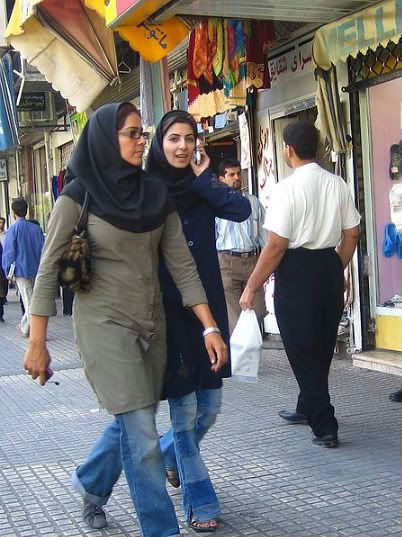
In 1963, America learned a painful lesson when Pennsylvania Station, an architectural treasure that Senator Daniel Moynihan described as "the best thing in our city," was torn down and replaced with a dreary complex that includes an office building and Madison Square Garden. The rail station, to this day the nation's busiest, was moved underground into a claustrophobic warren of artificially lit passageways and bleak waiting rooms. While there has been an active campaign since the 1990's to rectify the mistake by creating a new and worthy station a block away, the $1 billion-plus project remains tied up in political gridlock.
But the sad saga of Penn was by no means an isolated incident. Almost like a rite of passage, cities across the country embraced the era of Interstates, Big Macs, and suburban sprawl by tearing down their train depots. (Frequently, they just did the Joni Mitchell thing and put up a parking lot.) But time and experience are showing that train stations are vital organs in a healthy city, and removing them deadens the entire organism. The lesson is especially stark at the moment, as cities around the country face the challenge of rebuilding the infrastructure for regional high speed rail networks. Chicago–once abundantly blessed with grand stations–is today bouncing around ideas for a new high speed rail depot.
One lesson of this legacy is that what replaces a well designed and centrally located rail depot can is rarely of equal worth to the city. Following a tour of 10 great depots that were lost to demolition orders–and one more that might be still–and what stands on those sites today.
1. NEW YORK CITY: Pennsylvania Station
THEN: "The best thing in our city," according to Sen. Daniel Moynihan

WHAT'S THERE NOW: The new Penn Station is a dingy labyrinth beneath an ugly arena

-
2. MEMPHIS - Union Station
When this city's Union Station opened in 1912, it was the largest stone structure in town. But when the U.S. Postal Service announced that it needed new land in the city in the late 1960s, the magnificent building was chosen for demolition because it no longer attracted the crowds that it had once brought into the city. Any interest in saving the structure itself was ignored.
These days Memphis is expressing interest in being part of the Southeast High Speed Rail Corridor.
THEN: A grand Beaux Arts depot for a thriving city

-
WHAT'S THERE NOW: A windowless postal facility surrounded by barbed wire

-
3. ATLANTA - Terminal Station
Atlanta was once the largest rail crossroads in the south. Travelers could get virtually everywhere quickly and conveniently by rail. Built in 1905, Terminal was the grand portal to the city. It had two Italianate towers and a huge train shed behind. When the station was razed in 1970, it was replaced by a government office building. These days Atlanta's intercity rail depot is a small former commuter rail station located far north of downtown, adjacent to a 16-lane highway.
Recently, Georgia governor Sonny Perdue–after scouting the passenger rail systems in Spain and China–has enthusiastically embraced the idea of a high speed rail network for the southeastern US. Of course, Atlanta would be a network hub–and very likely in need of a suitable depot.
THEN: A fitting portal to a regional capital

-
NOW: A government office building

-
4. BIRMINGHAM, AL - Terminal Station
In 1909, Birmingham opened its grand Terminal Station, which united the train services of six operators. The two block-long Byzantine-styled complex had 10 tracks, and when opened was the largest of its kind in the South.
Yet this station — which served a peak of 54 trains a day in 1943 — by 1969 only was seeing seven daily arrivals. As a result, the city chose to demolish the structure that year. Although the land was originally intended for a new federal building, a highway was built there instead.
Today, Birmingham is slated as a primary stop on the designated high speed rail corridor linking New Orleans and Atlanta.
THEN: An impressive and centrally located depot

-
NOW: A connector highway

-
5. CHICAGO: Grand Central Station
Perhaps more than any other American city, Chicago's destiny has been a result of its transportation links to the rest of the country. As such, it had something of an abundance of train stations. Even while it still has four commuter terminals inside the Loop, knocking down impressive stations like Grand Central did not yield much for the city. The site of this former station, prime real estate on the banks of the Illinois River, is still a vacant lot after nearly four decades.
THEN: Located on the banks of the Chicago River, the beautiful station with ornate marble floors, Corinthian columns, and a fireplace. It served travelers to DC and many other cities.

-
NOW: A vacant lot

http://www.infrastructurist.com/2009/06/22/11-beautiful-train-stations-that-fell-to-the-wrecking-ball/


 So the House passed the Waxman-Markey climate-change bill. In political terms, it was a remarkable achievement.
So the House passed the Waxman-Markey climate-change bill. In political terms, it was a remarkable achievement.























 Images are driving the Western response to the Iranian elections. The media, hampered in their ability to report from the ground, has elected to go with citizen videos and photographs of the rising civil unrest. One early narrative that emerged, before the demonstrations against the results of the election, was of a beautiful Iranian woman, in modern clothes, wearing a loose headscarf and casting her vote.
Images are driving the Western response to the Iranian elections. The media, hampered in their ability to report from the ground, has elected to go with citizen videos and photographs of the rising civil unrest. One early narrative that emerged, before the demonstrations against the results of the election, was of a beautiful Iranian woman, in modern clothes, wearing a loose headscarf and casting her vote.


